Probably every restaurant owner has heard a guest complaining about prices, customer service, or their steak being undercooked.
These complaints may not seem like a big issue if they occur sporadically, but when they add up, they can start to paint an unflattering picture of your restaurant and may even put your entire business in jeopardy.
For this reason, restaurant complaints should always be taken seriously, and we’re here to help you deal with them efficiently.
In this article, you’ll find five common restaurant complaints and a set of tips to handle them.
Follow our advice, and you should not only eliminate complaints but also help protect your restaurant from lawsuits, inspections, and staff resignations.
Our story begins before your guest is even seated.
Table of contents
- Difficulties Getting a Table
- Subpar Food Quality
- Overpriced Menu Items
- Bad Customer Service
- Lack of Cleanliness
- Conclusion
Difficulties Getting a Table
When guests aren’t sure if they can get a table at your restaurant, their big plans can quickly turn sour. That’s because they risk a number of different inconveniences, such as:
- Being turned away at the door
- Having to wait until a table is available
- Being seated at a table unsuitable for their needs
Therefore, it’s not surprising that difficulties getting a table ranks high on the list of common restaurant complaints, and it also makes sense that guests tend to get upset when this is the case.
We’re not kidding.

Source: Reddit
The solution here is obvious: allow reservations at your restaurant and make sure guests can always book a table at their convenience.
What do we mean by this?
Well, having just a phone line and no other booking method could prove inconvenient very quickly.
What if your staff is too busy to pick up the phone and take down a reservation during the dinner rush? What if a guest calls outside of business hours and no one picks up the phone?
That’s why it is a good idea to have an online reservation system.
When this tool is available, guests can simply visit your website and create a reservation by inputting their desired date, time, party size, and contact information.
Here’s how that works in Tablein’s online reservation system:
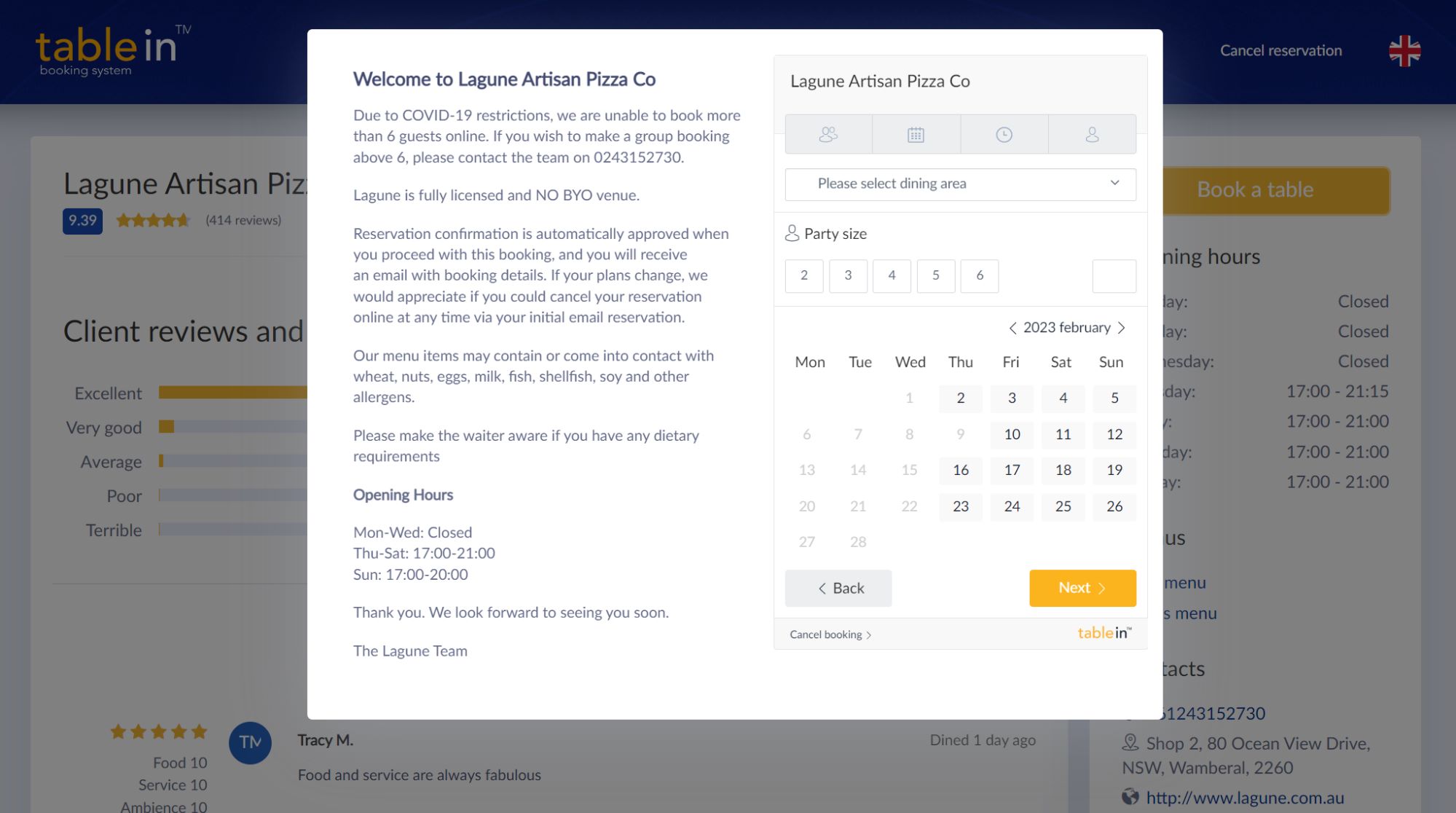
Source: Tablein
Guests also have the option of picking out their preferred dining area (for instance, the terrace or interior dining hall) and can get familiar with your restaurant policy and opening times (the left side of the booking form above).
With these options available, there’s no need to call the restaurant, and the guest can book their table at any time of day or night, whatever is good for them.
Easy, right?
Knowing it might be difficult to get a table at your establishment might make guests think twice before visiting.
You can take those doubts away simply by offering an online table booking system and ensuring guests can always make a reservation before coming in.
Subpar Food Quality
This one can really sting. If you’re unable to prepare good food, should you even stay in business?
Yes, because your kitchen staff can always improve by acting on guest feedback and engineering the restaurant’s menu to put your best-performing dishes on the frontline of your business.
That’s what the pros, like experienced restaurateur Ross Boardman recommend, anyway.
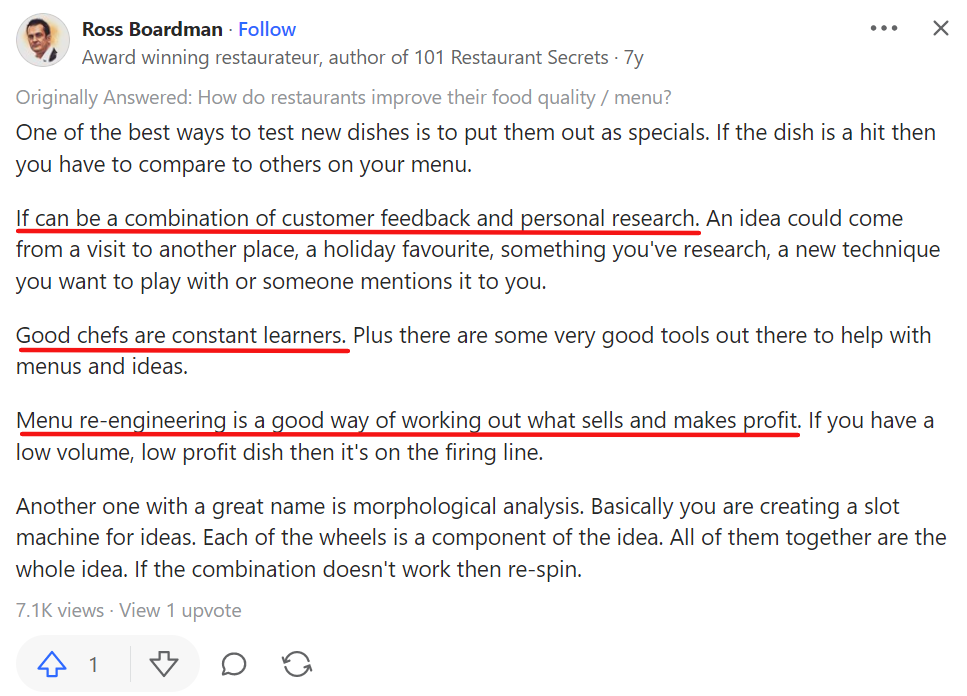
Source: Quora
The first method, acting on feedback, is a bit easier, so let’s start there.
The method relies on collecting feedback from guests, analyzing it to find improvements, and then implementing those improvements to raise food quality.
The collection part can be done in person by getting servers to always solicit feedback from guests and periodically asking them which issues pop up the most.
You can also monitor various online resources to get more unfiltered feedback from guests who may have been hesitant to share an honest opinion in person.
Resources that could be useful here include:
- Google Business reviews
- Tripadvisor
- Yelp
- Your online reservation system
Of course, some of this feedback won’t be based on actual facts but rather subjective opinions.
However, if one or two pieces of information keep popping up, then there might be truth to this particular criticism.
So, for instance, perhaps a common theme in your restaurant’s reviews is that the food is bland, like in the review below:
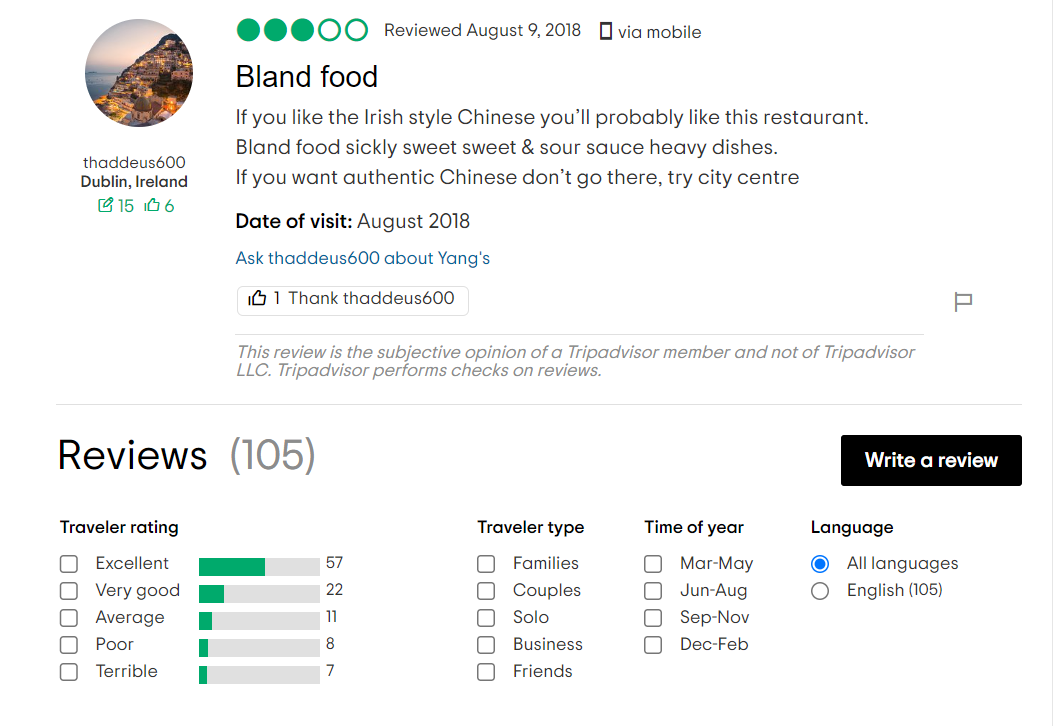
Source: Trip Advisor
Should you see this opinion crop up multiple times, from different sources, then it might be time to talk to your chef about it.
Menu engineering can be even more effective. This method involves looking at the ordering history at your restaurant to find the most and least loved items on your menu.
To do this effectively, you’ll need a point of sale (POS) system with reporting capabilities.
Revel is a good contender in this regard.
Revel can produce reports that tell you which dishes on your menu are getting the most attention from your guests and which dishes are largely ignored because they’re just not appealing to guests.
Here’s how that looks:
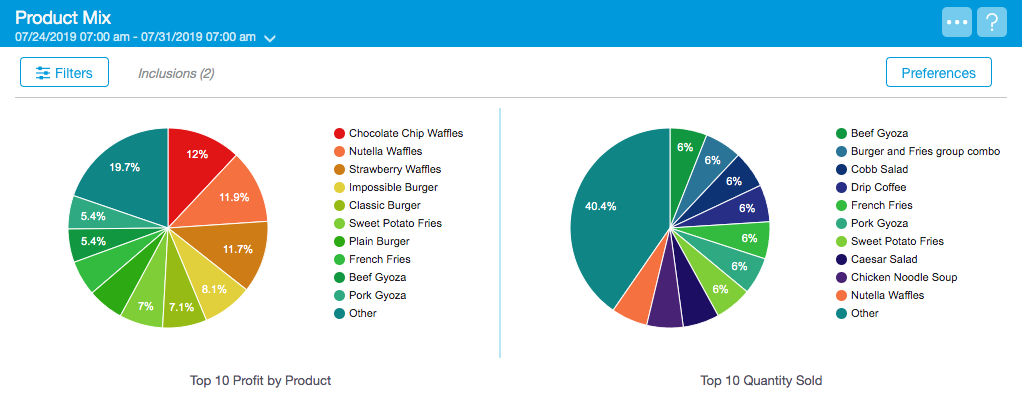
Source: Revel
That way, you can confidently get rid of menu items that aren’t working for you and keep those that are loved by guests and recommended to new visitors who come through your door just to try that bacon cheeseburger you do better than anyone else in town.
Hearing that your restaurant serves subpar food can be devastating. Instead of despairing, keep your ears open to customer feedback and take a good, hard look at your menu to make improvements that will take this complaint out of the equation.
Overpriced Menu Items
Menu engineering can also help you adapt and modify your prices without operating at a loss.
That can be of great help to restaurants that face customer complaints regarding their menu prices.
The process begins with carefully measuring the ingredients that go into each of your dishes and conducting a cost calculation for each of those ingredients.
A tool that can help you here is a food cost calculator. You can create a template similar to the one below and use it every time you need to calculate what it costs you to make a dish.
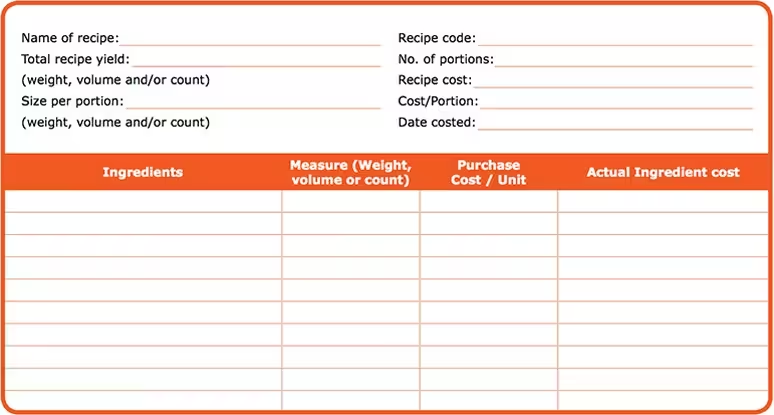
Source: Unilever Food Solutions
So, what you’ll want to do is look up the cost of every ingredient of a dish and then multiply it by the amount that goes into that dish.
For example, if a kilogram of ground beef costs you 10 euros and 0.2 kg of it goes into your burger patty, the total cost of beef for your burger would be 2 euros.
Repeat this process for every ingredient in the dish, add up the figures, and you’ll get the total cost for this menu item.
After that, you can go ahead and compare those prices to the prices on your menu to see where you stand.
Now, the restaurant industry standard is keeping the food cost between 28% and 35% of the selling price, depending on the kind of restaurant you’re running, in order to turn a good profit and keep the lights on.
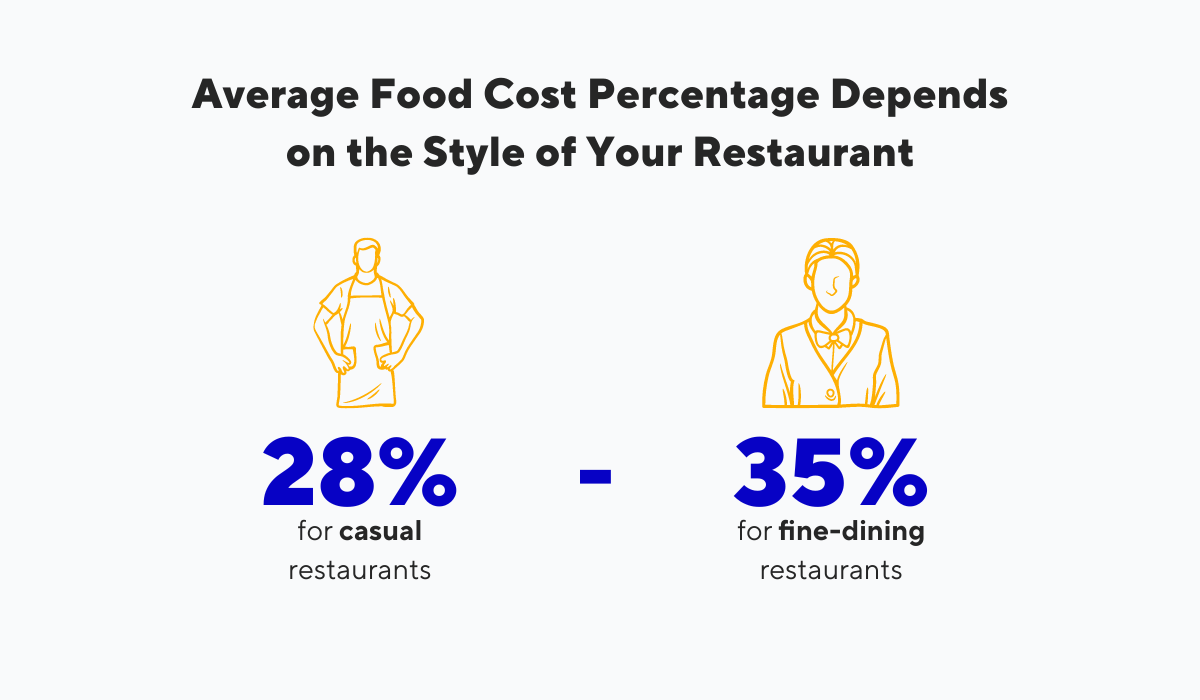
Illustration: Tablein / Data from: Chron
Therefore, your next step is to calculate the difference between your selling price and the food cost.
For example, if a meal costs 5 euros to make, but you’re charging the guest 22 euros for it, then the food cost for this item is around 22% of the selling price. In this case, there’s room for a price reduction.
A selling price of around 18 euros would mean you’ll still be making a profit while accommodating the pricing expectations of the guest.
Compare the prices of your other menu items to their costs and see where you can find room for reductions. That should help you eliminate the complaint that your food is overpriced.
Bad Customer Service
Bad customer service is another common complaint that can seriously jeopardize your restaurant business.
After all, no one wants to visit a restaurant known for slow, forgetful, or, worst of all, rude staff.
The review below proves it:
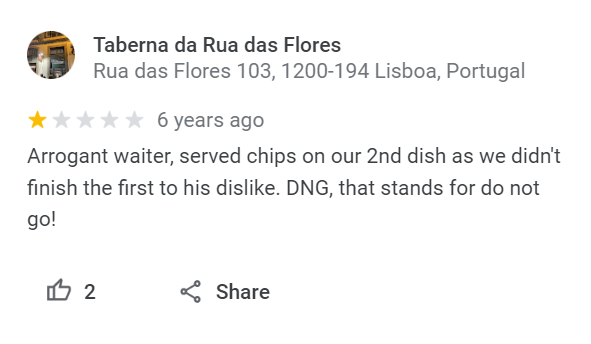
Source: Google
Luckily, there are a few ways you can tackle this problem.
The first one is to take a look at your staffing schedule. Is your front-of-house staff inefficient because they’re too thinly spread out?
Could they be rude because they’re burned out from too much work?
Remember that one waiter should not be serving more than four or five tables at a time.
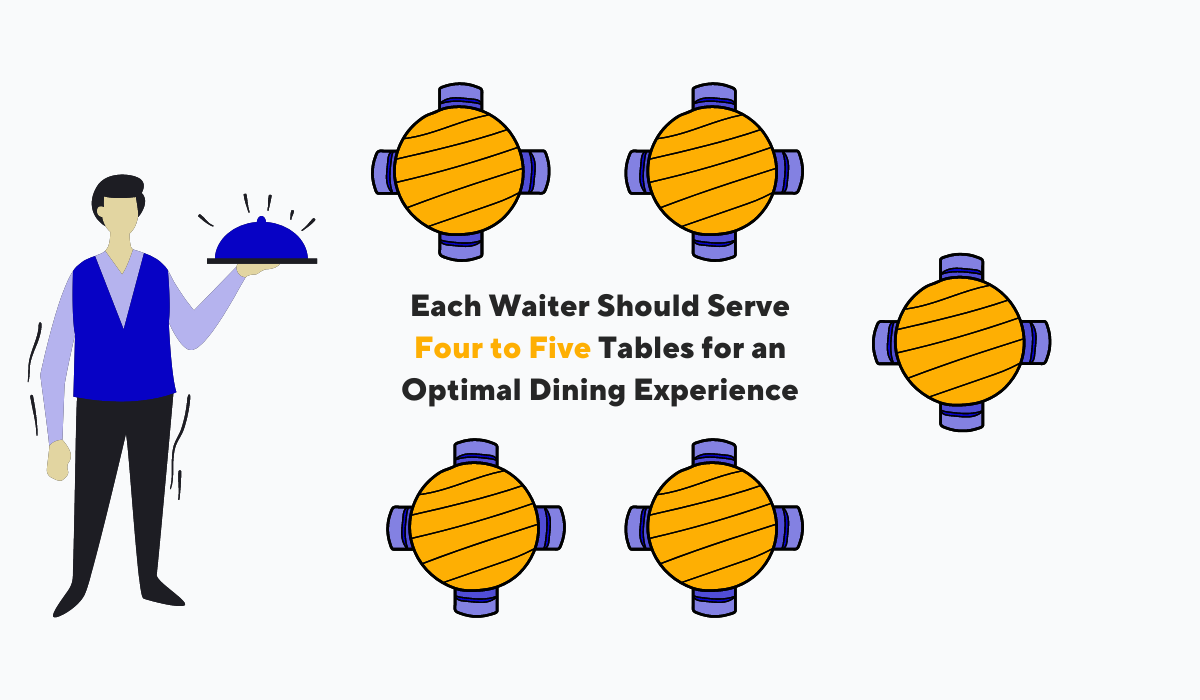
Illustration: Tablein / Data from: Qwick
Anything more than that will put you at risk of slowing down service and overwhelming the waiter to the point when they’ll be forgetting orders and bringing the wrong items to the guests’ tables.
So, try to figure out when your busiest times are and make sure you’re adequately staffed at those times of the day.
Secondly, if you’re running a fast-paced establishment, the root of the problem might be found in the way the waiters are taking down orders.
Are you making them remember their orders without any aids? Are they taking down orders on loose pieces of paper?
Both of these methods are vulnerable to mistakes and confusion, so consider investing in a hand-held point of sale (POS) solution to reduce the pressure on your servers.
This kind of solution often comes in the form of POS software that can be downloaded to a device, such as an iPad.
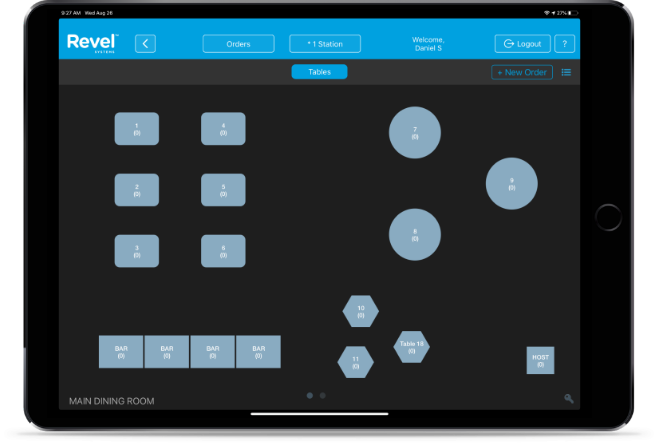
Source: Revel Systems
The server just needs to select the appropriate table, input the ordered items from the menu, and the order is automatically relayed to the kitchen.
There’s no chance of the order being forgotten, lost, or mismatched this way.
Finally, make sure to talk to your servers about appropriate behavior when handling guest complaints so that they don’t come off as rude or argumentative.
Here are some great tips from an experienced server and manager:
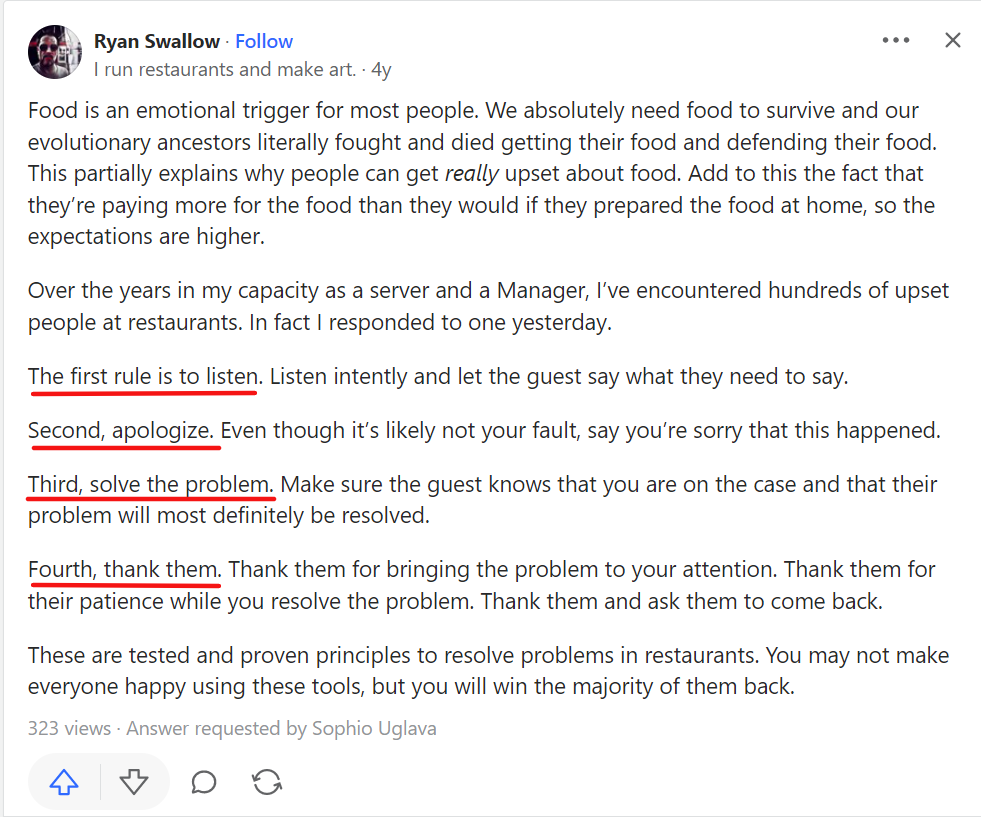
Source: Quora
With an optimal number of bodies in the dining hall, all of whom are equipped with the right tools and engagement tactics for interacting with guests, you’ll be effectively removing all causes of bad customer service, and ensure guests have nothing to complain about.
Lack of Cleanliness
Apart from putting off customers, a lack of cleanliness can cause some serious sanitation issues, which may lead your restaurant to be shut down.
So if you ever hear this complaint from a customer, act on it immediately.
A lack of cleanliness can manifest itself in many aspects of your restaurant:
- Dirty or sticky floors
- Tables not cleared as new guests are seated
- Stains on cutlery, glasses, or plates
- Unpleasant odors in any part of the establishment, especially the restroom
Keeping the restaurant clean is primarily the responsibility of your cleaner or the cleaning company you work with, but don’t forget that your staff should also participate in cleaning duties.
A good tactic for tackling this problem is making a comprehensive list of everything that needs cleaning at your restaurant, deciding how often this item needs to be cleaned, and delegating the job to the appropriate staff members (for example, tables should be cleared by FOH and the kitchen vent by BOH).
Here’s a sample schedule with some examples.
| Cleaning frequency | Front-of-House | Back-of-House |
| Daily |
Counter, tables, surfaces Vacuum carpet Mop floors Restroom |
Surfaces, sinks, walls Ovens, mixers, grills Mop floors |
| Weekly |
Light fixtures Doors, windows |
Ovens, deep fryer Empty garbage cans |
| Monthly |
Walls and ceiling Dust decorations |
Vent hoods, grease traps Walk in freezer |
Also, make sure you’re working with the right chemicals and cleaning supplies to guarantee a high sanitation and health standard.
That means buying specialized supplies that can de-grease, disinfect, and protect your restaurant’s surfaces and equipment.
Remember, cleanliness is the responsibility of your entire staff. So set some standards for your restaurant, delegate the appropriate tasks, and enforce strict compliance.
Otherwise, customers complaining about a lack of hygiene will be the least of your worries.
Conclusion
Customer complaints are always going to be a part of the restaurant business.
However, when you keep getting the same kind of negative feedback from multiple guests or see it pop up in online reviews, it’s time to take action.
In this article, we’ve talked about five of the more common complaints guests bring to your attention, and offered an action plan for combating each one.
In the end, keeping your eyes and ears open for customer feedback and reacting before the problem escalates and becomes unmanageable are your most powerful tools for keeping your guests happy and your restaurant in business.
Get a 30-day Exclusive Trial
As a Tablein blog reader, you’re eligible for an exclusive 30-day free trial to experience our simple reservation solution for your restaurant.
Enter your business email, and we’ll send you all the steps needed to create your account.
Share this
You may also like

5 Common Reasons Why Restaurants Lose Table Reservations

5 Tips That Will Keep Customers Coming Back to Your Restaurant
